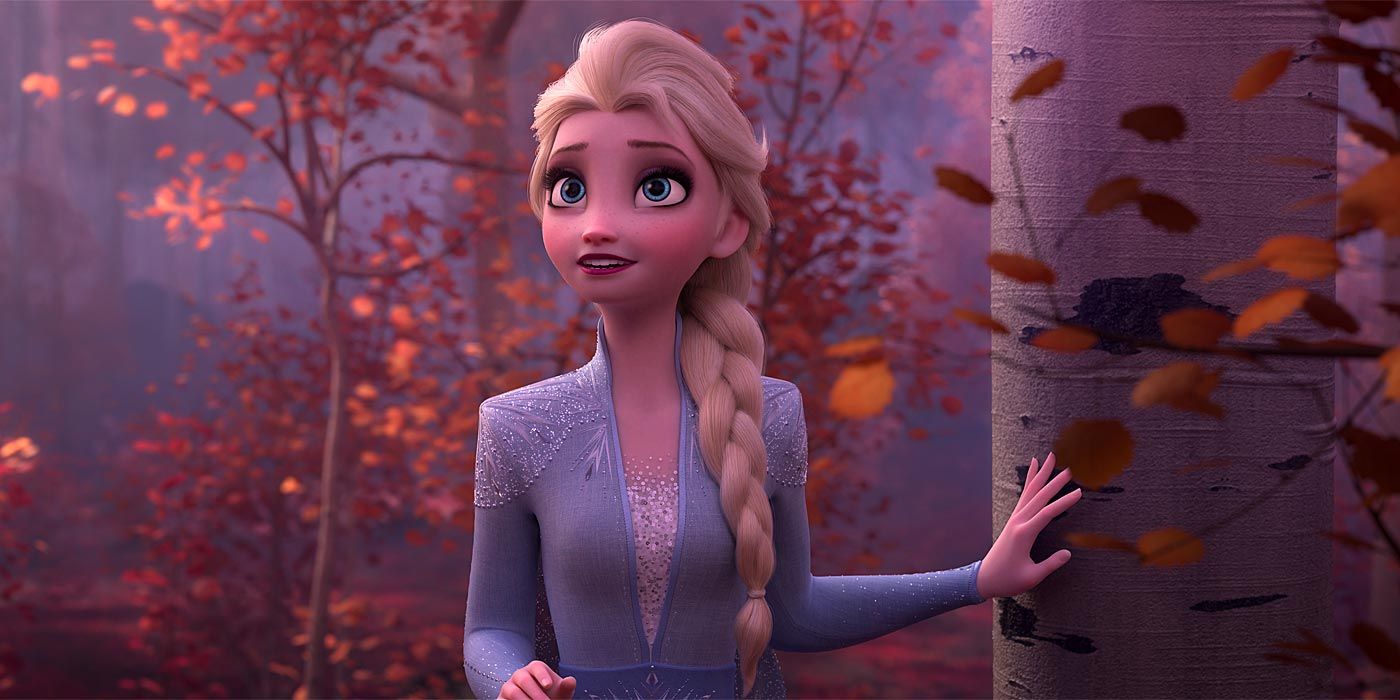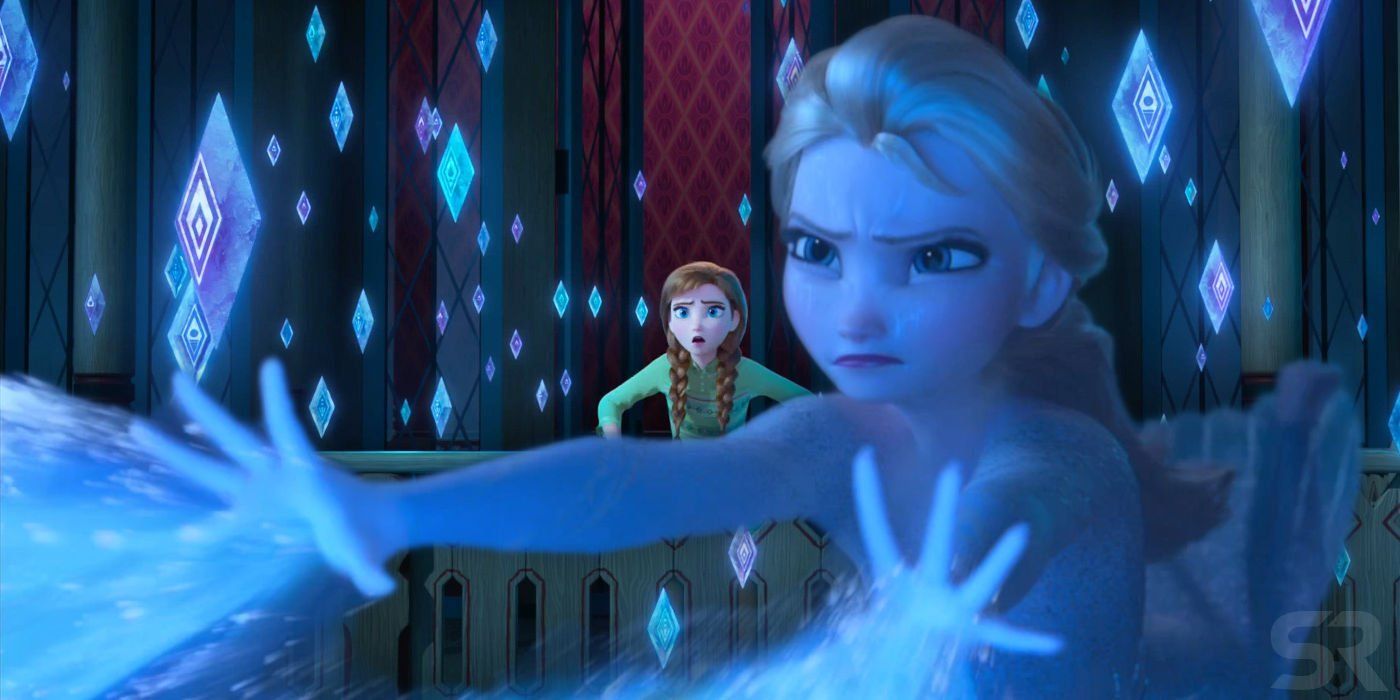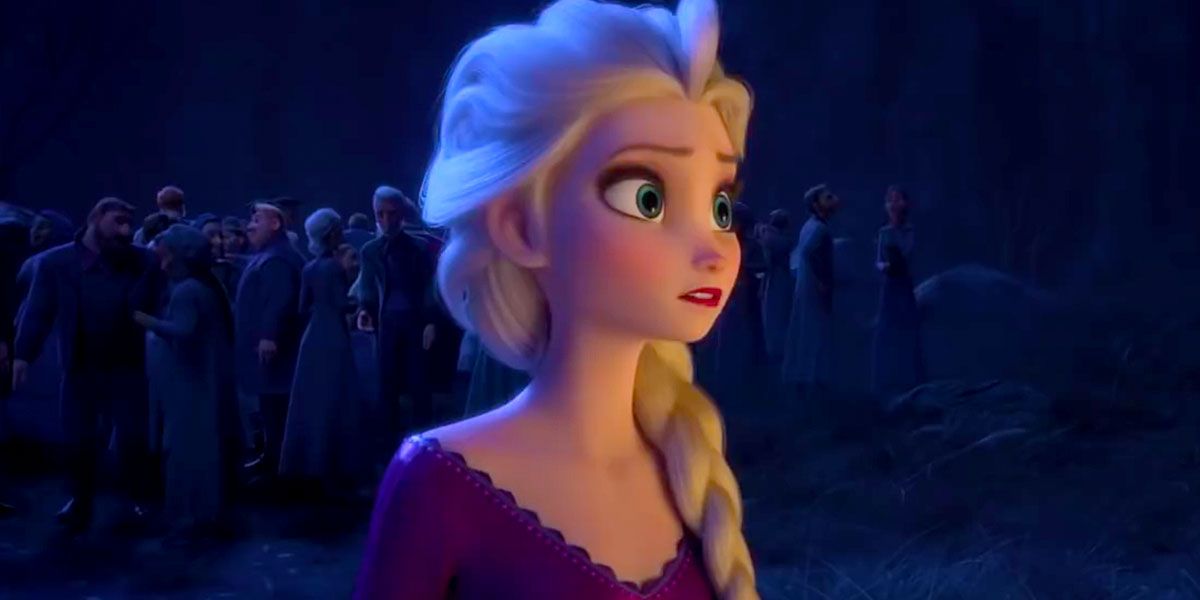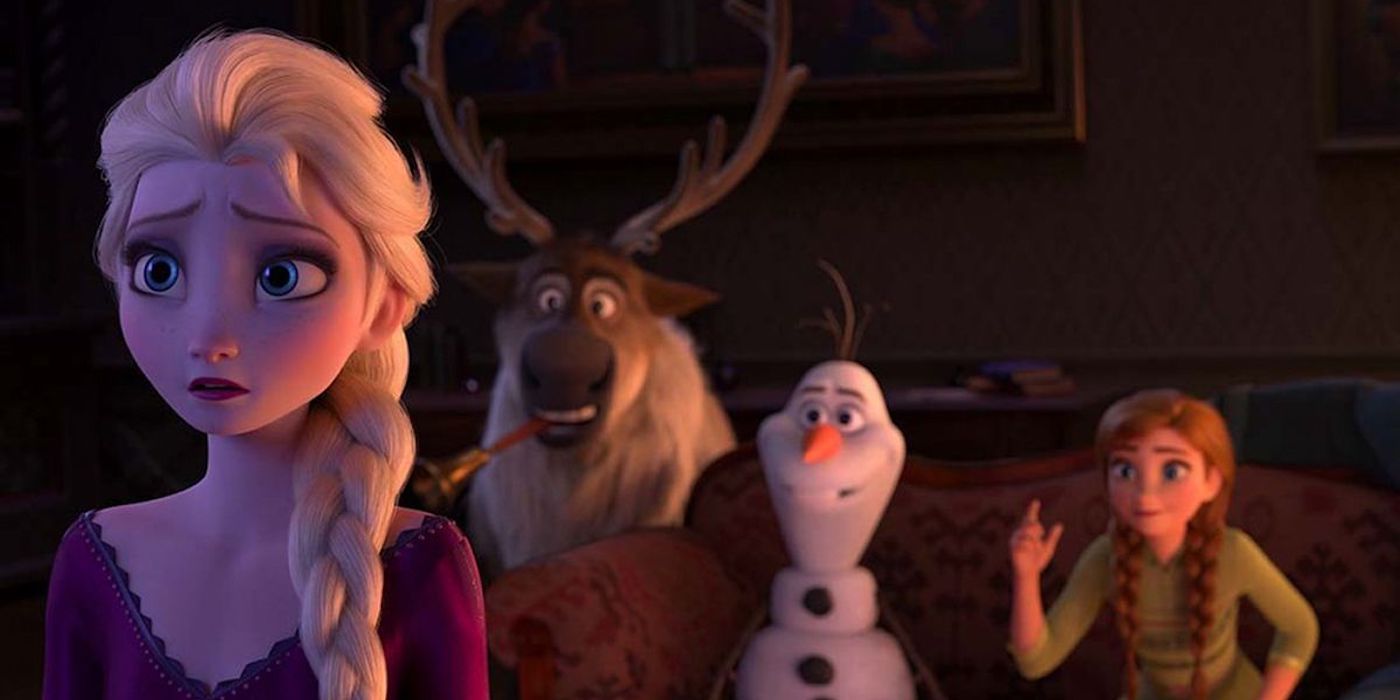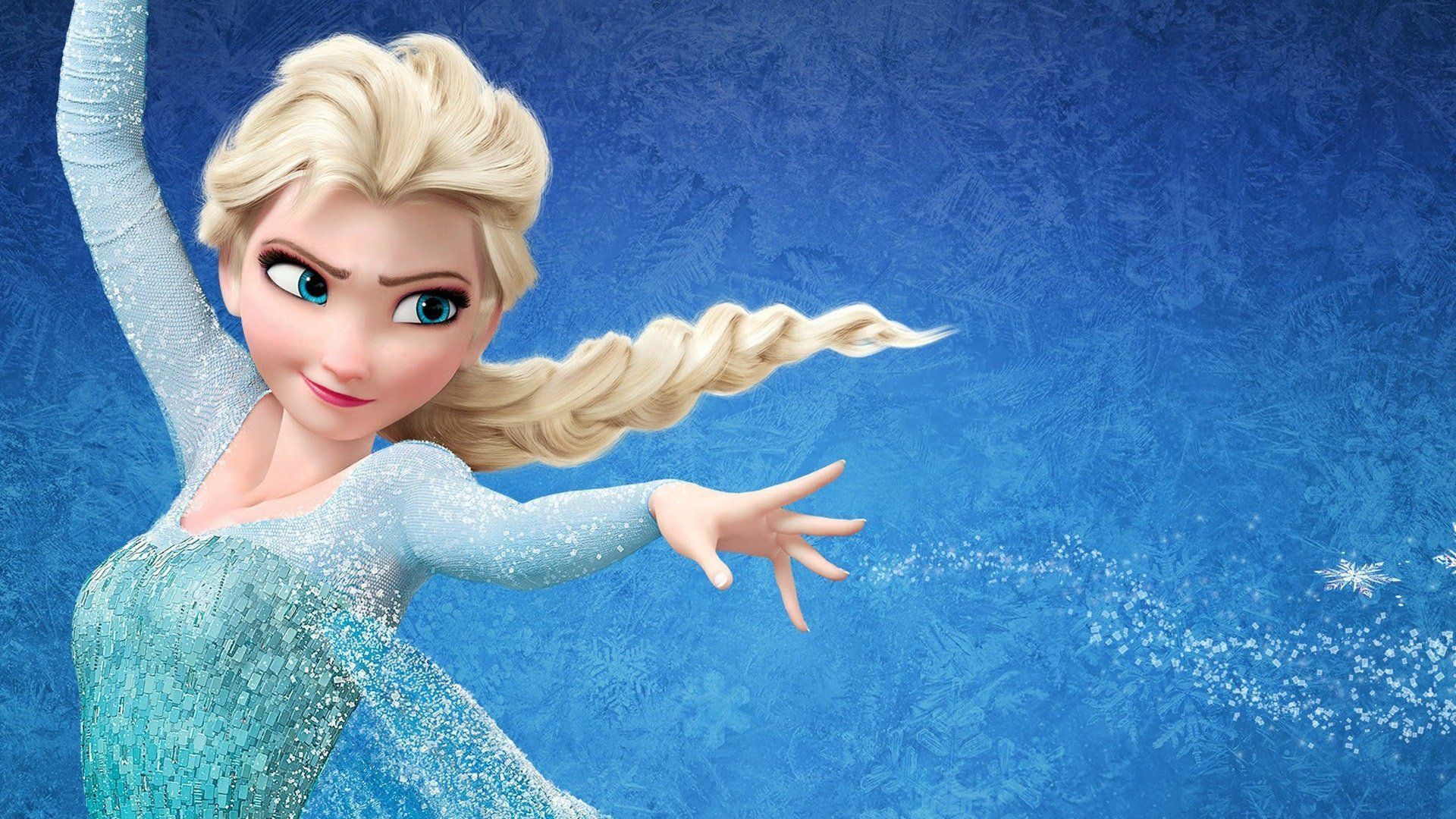WARNING: The following article contains spoilers for Disney's Frozen 2, in theaters now.
Disney's Frozen 2 was one of the most anticipated films to come out in in the history of animation. After the mega-success of Disney's Frozen, fans had high expectations for the second outing — as well as concerns that it wouldn't deliver.
A very vocal undercurrent among the hype was the hope that Elsa in the sequel might end up with a girlfriend. Very shortly after the original's release, Frozen gained a strong LGBTQA fanbase due to how many people in the community identified with Elsa's struggle. They saw Elsa as queer-coded, or someone who is written as part of the LGBTQA community in regard to their actions, wants, desires, but never explicitly confirmed.
This is common especially in Disney villains, such as Ursula or Scar, but Elsa's positive arc of coming out to be yourself resonated with a lot of this particular audience. The calls for Disney to deliver on the character's nature grew as the film was closer to release, and then... Elsa didn't end up with a girlfriend. However, she might still be an LGBTQA character. More specifically, that "A" at the end. What if Elsa isn't a lesbian, but rather asexual?
Queer Subtext in Frozen
Many people who are not part of the LGBTQA community might not understand the queer subtext to Frozen. While this won't be a perfect explanation, it should, in short, give an idea why members of the LGBTQA community identify so often with Elsa.
Elsa has a quality of hers that makes her different, but her parents tell her not to tell anyone about it, because it might hurt those she cares about. So, throughout the first act, Elsa either remains literally closeted in her room or restrained as to not slip up and reveal her identity to those around her. The moment she does slip just once, the entire kingdom turns on her and treats her as something awful when she obviously isn't. This leads the character very musically Let Go of the restraints that kept her from being her true self.
This very much aligns with the experience many members of the LGBTQA community experience. Many hide themselves from those around them to avoid societal shame. They might either keep themselves away from a society they fear or just meticulously avoid saying anything incriminating. When they do slip up, however, people will inevitably treat them as different, even dangerous depending on the community. But still, with that comes the benefit of just "letting go" and being your true self, regardless of what anyone says.
Even the mantra "conceal, don't feel," has huge implications when applied to people who have to conceal their attraction to people society believes they shouldn't. Thankfully, Frozen ends with Elsa being accepted by society, which, again, resonated with audiences who would project their experiences onto her.
Frozen: Queer-Baiting?
Many fans who hoped (possibly beyond hope) that Elsa would be a lesbian were aware that Disney might be doing what many refer to as "queer-baiting," or teasing a same-sex or otherwise LGBTQA relationship without actually intending on delivering. Many shows, such as the BBC's Sherlock, have been accused over the years for teasing relationships to draw in fans, despite the writers never actually intending on incorporating said relationships into the series.
This is very similar to ship-teasing in general, where, rather than potentially develop a canon relationship over the course of a narrative, writers just tease it. It's already a disappointing trope, made worse by the tease of actual representation of an otherwise under-represented minority group.
With Elsa, many fans petitioned for Disney to "Give Elsa a Girlfriend," but while this faction blossomed, many fans acknowledged Disney probably wouldn't bring in an explicitly queer character to headline its biggest film.
The Under-representation of Asexuality
If you've seen Frozen II, you know that, no, Elsa doesn't get a girlfriend. In fact, she doesn't pursue any romantic relationships. She, very reasonably, destroys Hans's ice statue in her dream-like flashback sequence, which ties back to her dismissal of romantic relationships in the first film, where she refuses to even humor Anna's desire to marry Hans, seeing it as bizarre and alien.
Often ignored by mainstream society, asexuality is when an individual feels little to no sexual attraction towards people. There are multiple shades of asexuality, but the two catagories Elsa appears so far to fall under is asexual and aromantic. An asexual person can still find romantic satisfaction with a partner, since sexual want and romantic love are totally different. However, Elsa appears to be aromantic as well, having no desire for romance with anyone over the course of two films.
It is very uncommon to find representation of asexuality in animation. Bojack Horseman is one of the few to explicitly present a character, Todd Chavez. as asexual. Many anime fans might also point to characters like Rei Ayanami and Yuki Nagato as asexual, though this is never explicitly stated. But if you dig deeper, you'll find it's incredibly hard to find any representation of asexuality in fiction, which helps explain the unfamiliarity of so many. If populations don't see something in media, it can sometimes be hard to understand it. Even returning to BBC's Sherlock, it took Benedict Cumberbatch to argue he sees his character as asexual, though the writers didn't seem to confirm it one way or the other.
So is Elsa Asexual?
Of course, this being Disney, any sort of sexual attraction is far less likely to be explicitly presented (though appears with some frequency, such as in Aladdin, Beauty and the Beast, and Hunchback of Notre Dame). However, the lack of any romantic prospect leaves Elsa seeming very unlike her peers. She appears from the start to have little to no want of anyone in her life as a romantic partner. Even during her iconic "Let it Go" song number, her sense of self-discovery is entirely over herself—she doesn't go out to create a perfect partner for herself or run into the arms of some romantic interest.
So is Elsa asexual? It's hard to say for sure in canon, but given the evidence provided, it would be a very valid interpretation of the text, especially if a theoretical Frozen III once more refuses to give Elsa a girlfriend, but, in order to not isolate the LGBTQA fans who have taken in Elsa as a pseudo-icon, doesn't give her a boyfriend either.
Disney's Frozen 2 reunites directors Jennifer Lee and Chris Buck and producer Del Vecho with voice actors Idina Menzel, Kristen Bell, Jonathan Groff and Josh Gad. Returning musical talents include Kristen Anderson-Lopez and Robert Lopez.

